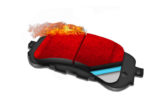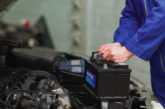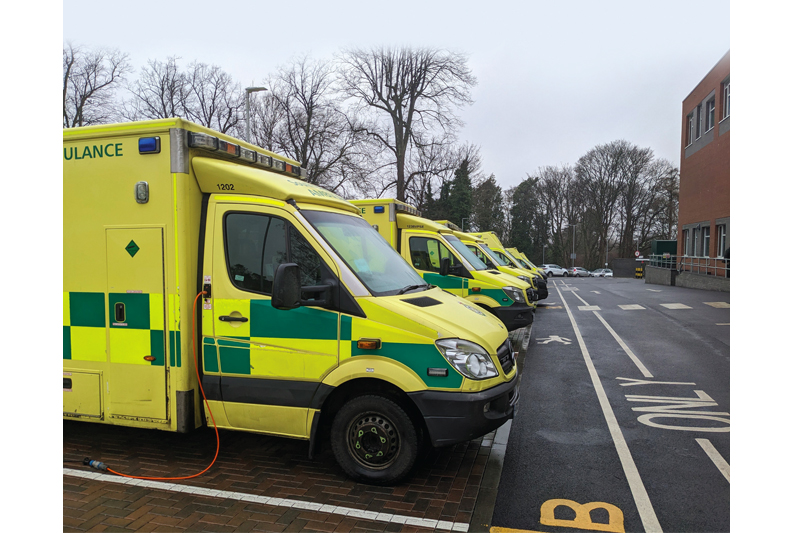
PMM’s editor Kieran Nee went to Banstead to visit Ross Crook, an area workshop manager for the Southeast Coast Ambulance Service to find out what particular challenges an NHS workshop faces and discovers that there is more in common with an independent garage than he had first thought.
It was at our annual Mechanex trade show, last year, that Ross Crook and John Giles, area workshop managers for the NHS’ Southeast Coast Ambulance Service first approached the PMM team to ask if there was any way we could help. Not being the handiest of people (editors rarely are), we asked how we could possibly be of any use to someone in charge not just of repairing vehicles but repairing actual life-saving ambulances. I like to think my editorial viewpoints are somewhat interesting and maybe raise the odd smile, but they’re hardly emergency services-level useful.
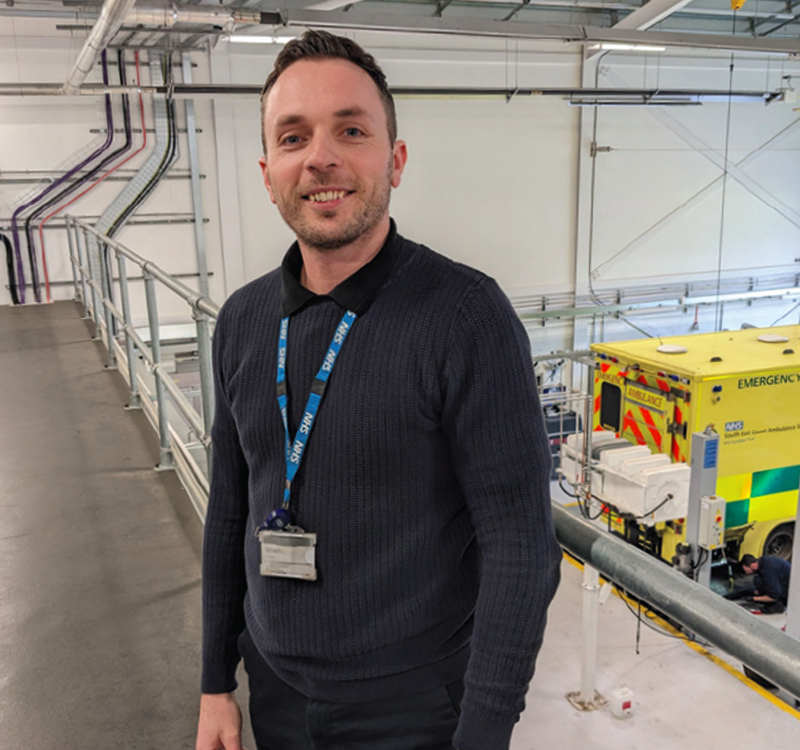
And then came the familiar lament, one we’ve grown so used to hearing in recent years it’s almost becoming a cliché: “We can’t get any staff, it’s becoming a real problem”. So I went to the service’s Make Ready Centre in Banstead, one of the 12 workshops that Ross and John oversee, covering over 600 vehicles, 398 of which are ambulances, to find out more about what is involved in repairing vehicles for the NHS.
Each workshop has between four and six technicians on site, working seven days a week, 52 weeks a year, including early and late shifts. Besides the routine maintenance, there is a lot of un-planned repairs to do, so the workshops needs to be able to react quickly and ensure the fleet is back on the road as quickly as possible.
One advantage, Ross explains, over an independent workshop is that they know what vehicles are coming up for servicing and when – it’s all planned well in advance. But it’s not just the ability to pre-plan which will be whetting the appetite of the put upon independent technician: “As much as possible, a lot of the work we do is not just planned, but also preventative maintenance. So a lot of the guidelines that we work to are above and beyond what the manufacturer or the general road user might use. For example, we might have our brakes all replaced at 50 per cent. Our tyres are all replaced at 3-4mm, depending on the vehicle model.” In short, the NHS vehicles are treated similarly to any other piece of equipment it uses to care for people and everything practicable is done to eliminate the risk of nasty surprises.
There is a flipside to this prudence. As the more fiscally concerned of our readers might already be getting their letter stationary ready, it’s worth pointing out that Ross’ crew are subject to the same cost restrictions as the rest of the civil service: “Ae also have to get the balance right financially, because we need to consider that we are an outfit that’s spending money and that we need to make sure that we’re getting value for money for our users and for our trust and for the wider public.”
As might be imagined, sourcing parts at a moment’s notice isn’t quite as simple as going down to the local factor and certain “online marketplaces” are certainly out of the question: “We have a lot of frameworks that we need to work within. Some of our suppliers are set up through certain frameworks, so that makes it slightly challenging in getting parts at times because of the framework. The sheer complexity of our vehicles as well. We’ve got the equipment to look at.”
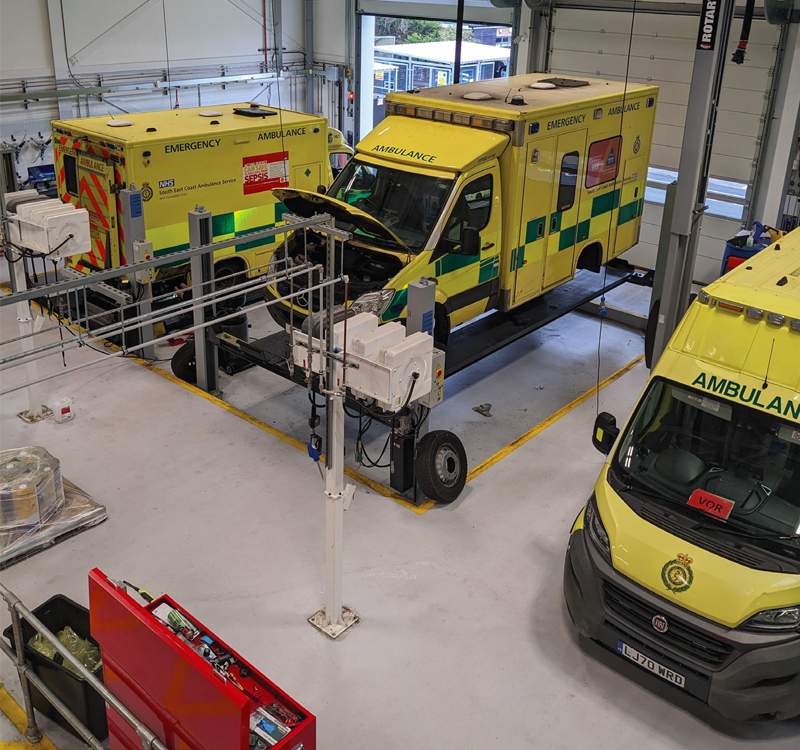
Let’s take a look at some of that extra equipment: “Some have got ramps and winches in order to bring stretchers onto the vehicle. We’ve got a tower lift assembly. Then you’ve got your systems which are integrated into the vehicle itself – the blue lights, of course, extra ECUs that control things in the back. We’ve got additional heating and cooling, we’ve got additional braking. So, for example, this vehicle we’ve got here today has got an electromagnetic brake underneath to improve the braking system.” And that’s not even going into the medical and patient care equipment on board.
The nature of the driving – quick, across terrains, high mileage (“upwards of 1,000 miles a week”) – and the extra weight means parts such as brakes and suspension wear out rather more quickly than normal. But such an accelerated service schedule has unexpected consequences, as Ross explains: “Because we are doing so many miles and because we have such a number of vehicles, we probably see faults even before the manufacturer sees them. Data’s a massive thing for us, and I think actually it’s quite underutilised in an independent environment. If you can look at some of your metrics, even in its most basic form, you can try and understand your business a little bit better to discover which areas you can improve on and what challenges you face – it may allow you to step out of the situation and have a conversation with your parts supplier or something.”
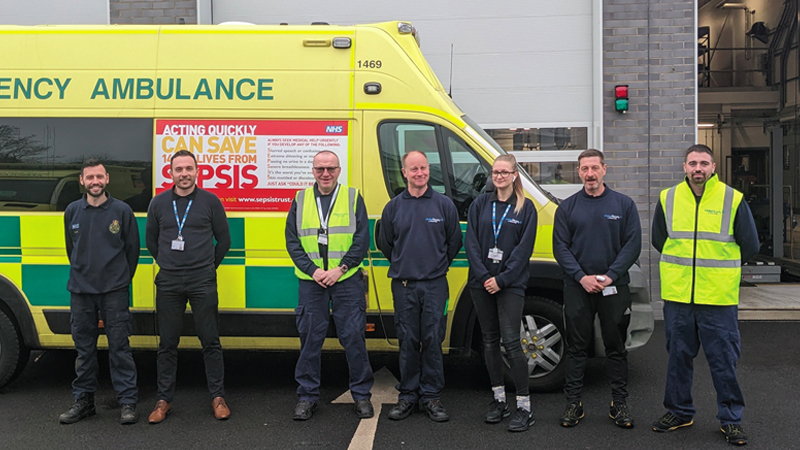
Skills shortage
Beyond the advanced technological solutions put to use by the service to ensure a steady balance of jobs throughout the year, it is a distinctly human problem which Ross is struggling to solve: getting people through the door in the first place. “I’ve kept an eye across the board and it seems we’re just facing the same problems as the rest of the industry – there really is a national skill shortage and it is something that’s really hitting us hard. I think it’s definitely getting worse. When I’m driving around visiting site to site, I notice there are a lot more vacancy bulletins out there.”
When I ask Ross what he thinks may be the reason for the shortage, he turns to the increasing complexity of modern vehicles: “We’ve got to remember there are lots of things on vehicles which are continually updating. For us in particular, a lot of people don’t know that ambulance and blue light service maintenance for vehicles in some areas is done in-house.”

